When to use dry vs. liquid measuring cups — and why it matters
Plus: how to use your measuring cups the right way.
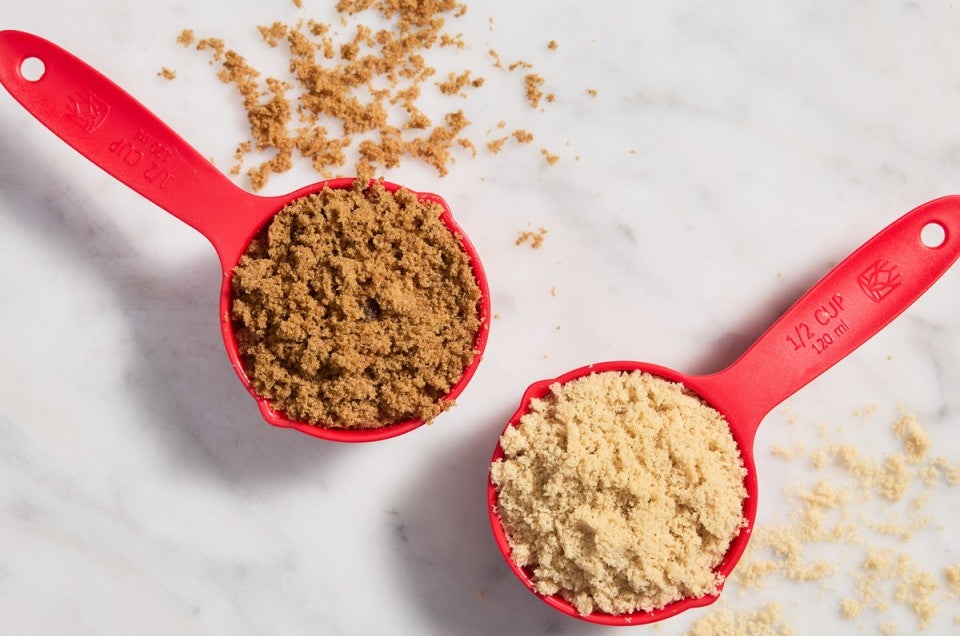

You probably know that there are different styles of measuring cups for dry and liquid ingredients, which help ensure the most accurate measurements possible. But how do they differ? And how important is it really to use the right cup for the right ingredients? While we prefer to weigh ingredients for baking, sometimes that’s not always possible. Here’s why using different measuring cups for different ingredients matters, and how to use them the right way.
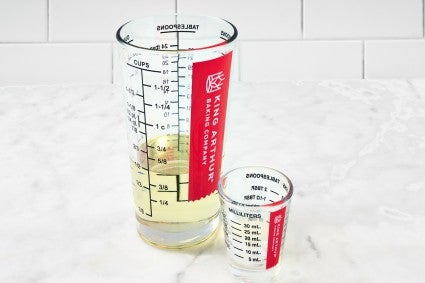
If you’re measuring oil, milk, water, or other liquid ingredients, you’ll want to grab a liquid measuring cup, which is crafted from clear plastic or glass. This tool typically ranges in size from one cup to eight cups. A liquid measuring cup can be used for recipes written with both metric and imperial measurements, as the cups typically come with marks for both the US customary (cups) and the metric (milliliter) systems.
Because these cups are clear, “you can pour the ingredient in and look through the glass to see where it falls against the measurement marks written on the glass,” explains pastry chef and baker Zoë François. Since liquids are self-leveling, it will be easy to get a more accurate read of the measurement. When using the liquid measuring cup, it’s important to set it on the counter to get a true reading. “If you’re holding the cup, the ingredient can slosh around and make it hard to know exactly where the liquid lands in the cup,” says Zoë. She recommends making sure that you’re eye level with the cup when reading the printed measurements to avoid any distortion. For the most accurate measuring, look at the bottom of the meniscus — aka the curve that forms on the upper surface area of the liquid.
What kind of liquid measuring cup is best? Rather than the traditional glass spout measuring cups, we love this mini and full-size version (which have a unique, pint glass-style shape for accuracy and ease), both of which feature weighted bases to prevent spillage and numerous measurements for baking success.
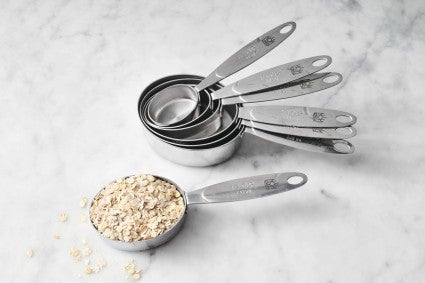
Dry measuring cups, on the other hand, are designed for measuring ingredients like flour, sugar, nuts, and grains. Most sets are made from metal or plastic and typically include 1/4 cup, 1/3 cup, 1/2 cup, and 1 cup measures. Our Easy Scoop Measuring Cups includes those four sizes, plus additional cups for less common amounts including an 1/8 cup, 2/3 cup, and 3/4 cup for better precision when baking.
When using a dry measuring cup, remember that “because dry ingredients don't self-level, you need to sweep the top to be flush with the cup or it won't be an accurate measurement,” says Zoë. When measuring flour, follow the “Fluff, Sprinkle, and Scrape” method, which means fluffing the product in its container using a spoon. Then, you’ll spoon the flour into a dry measuring cup until it’s overflowing and level it off with the back of a butter knife.
For more information about measuring flour by volume, check out this blog: How to measure flour the right way.
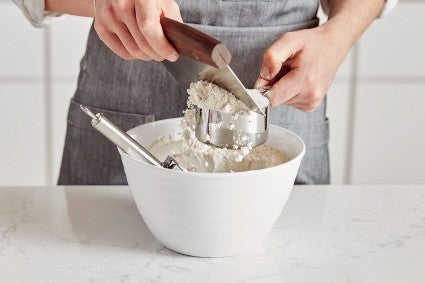
“If you are measuring something that is not dry, but doesn’t self-level, like sour cream, use a dry measuring cup,” adds Zoë. Other ingredients that may technically seem like a liquid but aren’t self-leveling include peanut butter, yogurt, and ricotta cheese. Ditto for granulated sugar, which is often incorporated alongside other liquids in most recipes. When measuring these ingredients, you’ll want to grab a dry measuring cup so that you can get the most accurate measurement.
On the flipside, any ingredients that self-levels — such as oil, water, milk, and juice — can be measured in a liquid measuring cup.
While it may seem like you can measure liquids in dry measuring cups (and vice versa), it’s not a good idea to use these tools interchangeably. Baking requires accuracy and precision, so even being slightly off with your measurements may impact the result. For example, it’ll be impossible to get an accurate reading of flour that’s measured in a liquid measuring cup since you can’t fluff, scoop, and level it the way that you can with a dry measuring cup. Sure, you might need to buy more tools or do a few more dishes, but it’ll be worth it.
And whatever type of measuring cup you’re using, make sure it’s accurate! Discount store options don’t always measure up (as we’ve found in the past) so make sure to source your measuring tools from a trusted source.
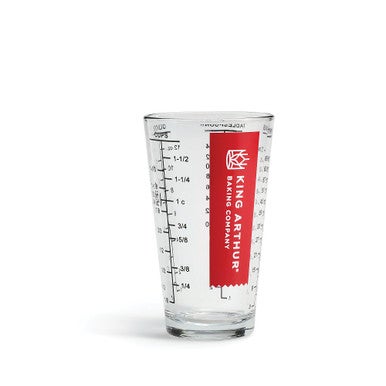
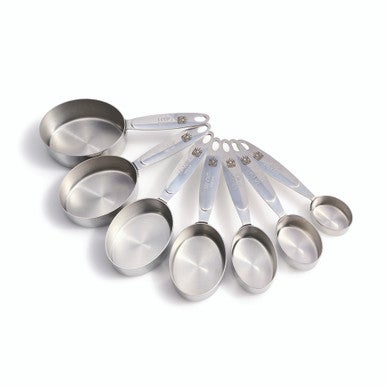
Cover photo by Patrick Marinello; food styling by Yekaterina Boytsova.

